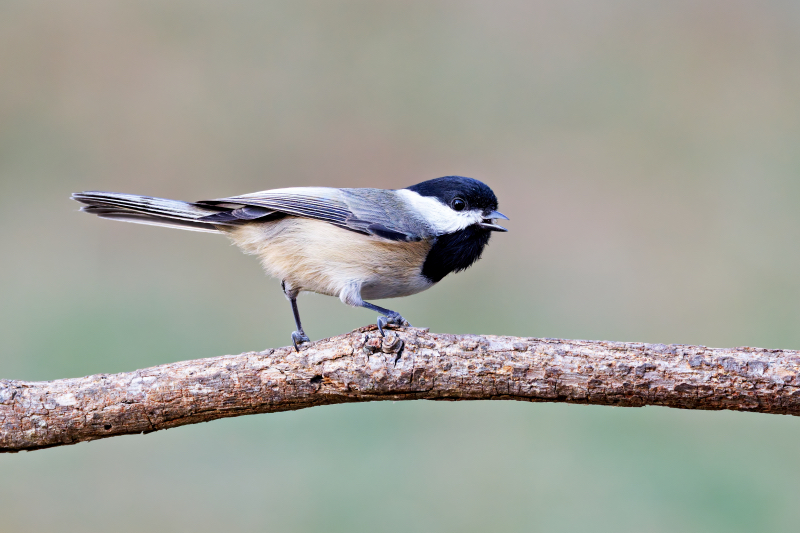The last week of October was slow for bird photography in my Arkansas yard. Things picked up a bit on Halloween and the first day of November, though. We also received some much-needed rain last week, with more forecasted, which is a welcome sight for the region.
Why Tufted Titmice and Carolina Chickadees Are Feeder Favorites
Two birds I can always count on at my feeders are the Tufted Titmouse and the Carolina Chickadee. They’re reliable visitors, and while I capture many photos of them, I don’t often share them on my blog or social media. I hold back, thinking others might find the constant posts of these two birds repetitive. However, I’m always watching for unique moments with these frequent guests, though their typical behavior is predictable, darting to the feeder, grabbing a seed, and flying off to a nearby perch. Occasionally, they’ll pause on the vine near my feeder to crack open a sunflower seed, revealing the kernel inside.
Don’t get me wrong, I thoroughly enjoy these daily visits. Having these regulars in my yard is a reminder of the joy birds bring, and I don’t take their presence for granted. I’ve worked hard to make my yard an inviting space for all types of birds. I know how fleeting these moments can be, and I hope the Titmice and Chickadees stick around for a long time.


Why Birds Might Take a Break from Your Feeders
Birds sometimes disappear from feeders for days, which can be unsettling for anyone who enjoys backyard birdwatching. Here are some common reasons:
1. Natural Food Abundance
In the fall, natural food sources like seeds, berries, and insects become plentiful. Birds often prioritize these over feeders, treating the latter as supplementary. When nature provides an abundance of food, birds may rely less on feeders.
2. Seasonal Changes
Bird feeding patterns shift with the seasons. Fall brings changes as birds prepare for winter, with some stocking up on natural food or adjusting their diet. These seasonal shifts influence how often birds visit feeders.
3. Predator Presence
The sudden appearance of predators can deter birds from feeders:
- Raptors: Hawks and other birds of prey in the area will scare smaller birds away.
- Cats: Outdoor cats near feeders pose a risk and make birds wary.
- Other animals: Raccoons, squirrels, or larger birds can also cause smaller birds to stay away.
4. Feeder Issues
Sometimes the issue lies with the feeder itself:
- Spoiled seed: Wet or spoiled seed can deter birds, so keep your feeders filled with fresh food.
- Dirty feeders: Birds avoid feeders that are moldy or unclean.
- Empty feeders: If a feeder has been left empty or is malfunctioning, birds may move on to other food sources.
5. Environmental Factors
Changes in the yard can affect bird behavior:
- Noise: Construction, traffic, or loud activities can scare birds away temporarily.
- New objects: Adding new decorations or changing the landscape can make birds cautious around feeders.
Patience and Consistency Matter
Temporary absences are normal. Birds will likely return once conditions are right. To keep your feeders enticing:
- Ensure they’re clean and filled with fresh seed.
- Position them in a quiet, safe spot away from predators.
- Consider adding a water source like a birdbath to attract birds back to your yard.
Camera and Settings
Here’s the camera and settings information for the photos of the Tufted Titmouse and Carolina Chickadee featured in this post.
Tufted Titmouse
- Date: November 1, 2024
- Time: 8:58 AM
- Camera: Canon EOS R5 Mark II
- Lens: Canon RF 100-500 mm
- Focal Length: 500 mm
- ISO: 6400
- Aperture: f/8
- Shutter Speed: 1/800
- Exposure Compensation: +0.7
Carolina Chickadee
- Date: October 26, 2024
- Time: 9:29 AM
- Camera: Canon EOS R5 Mark II
- Lens: Canon RF 100-500 mm
- Focal Length: 500 mm
- ISO: 2500
- Aperture: f/7.1
- Shutter Speed: 1/800
- Exposure Compensation: +0.7
